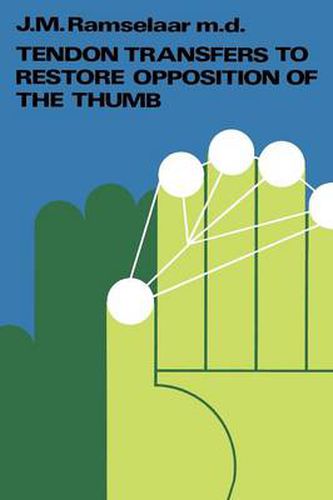Readings Newsletter
Become a Readings Member to make your shopping experience even easier.
Sign in or sign up for free!
You’re not far away from qualifying for FREE standard shipping within Australia
You’ve qualified for FREE standard shipping within Australia
The cart is loading…






This title is printed to order. This book may have been self-published. If so, we cannot guarantee the quality of the content. In the main most books will have gone through the editing process however some may not. We therefore suggest that you be aware of this before ordering this book. If in doubt check either the author or publisher’s details as we are unable to accept any returns unless they are faulty. Please contact us if you have any questions.
In man and some of the apes, the thumb has the function of a contra- finger. This function is made possible by a great freedom of movement of the first metacarpal and a highly developed and differentiated thumb musculature. The grasp function of the hand is dependent on the oppositional capacity and adductive power of the thumb, and is severely limited by a paralysis or dysfunction of the intrinsic thumb muscles. Whereas loss of the function of the adductor pollicis can be partially compensated for by the adductive action of the extensor pollicis longus, in paralysis or dysfunction of the radial thenar muscles compensation can only be provided by surgery. Since 1918, many methods of tendon transfer have been described for the restoration of thumb opposition, all of which bring about an improvement of the grasp function, albeit to different degrees. These methods vary in the selection of the motor, the direction of pull of the tendon, the use of a fulcrum, and the mode of insertion. The highly effective method of Bunnell (1938) is often used as the standard procedure. With this method, the flexor superficialis tendon of the ring finger is looped around the tendon of the flexor carpi ulnaris and passed subcutaneously across the thenar eminence, after which it is fixed on the thumb at the level of the metacarpo-phalangeal joint.
$9.00 standard shipping within Australia
FREE standard shipping within Australia for orders over $100.00
Express & International shipping calculated at checkout
This title is printed to order. This book may have been self-published. If so, we cannot guarantee the quality of the content. In the main most books will have gone through the editing process however some may not. We therefore suggest that you be aware of this before ordering this book. If in doubt check either the author or publisher’s details as we are unable to accept any returns unless they are faulty. Please contact us if you have any questions.
In man and some of the apes, the thumb has the function of a contra- finger. This function is made possible by a great freedom of movement of the first metacarpal and a highly developed and differentiated thumb musculature. The grasp function of the hand is dependent on the oppositional capacity and adductive power of the thumb, and is severely limited by a paralysis or dysfunction of the intrinsic thumb muscles. Whereas loss of the function of the adductor pollicis can be partially compensated for by the adductive action of the extensor pollicis longus, in paralysis or dysfunction of the radial thenar muscles compensation can only be provided by surgery. Since 1918, many methods of tendon transfer have been described for the restoration of thumb opposition, all of which bring about an improvement of the grasp function, albeit to different degrees. These methods vary in the selection of the motor, the direction of pull of the tendon, the use of a fulcrum, and the mode of insertion. The highly effective method of Bunnell (1938) is often used as the standard procedure. With this method, the flexor superficialis tendon of the ring finger is looped around the tendon of the flexor carpi ulnaris and passed subcutaneously across the thenar eminence, after which it is fixed on the thumb at the level of the metacarpo-phalangeal joint.